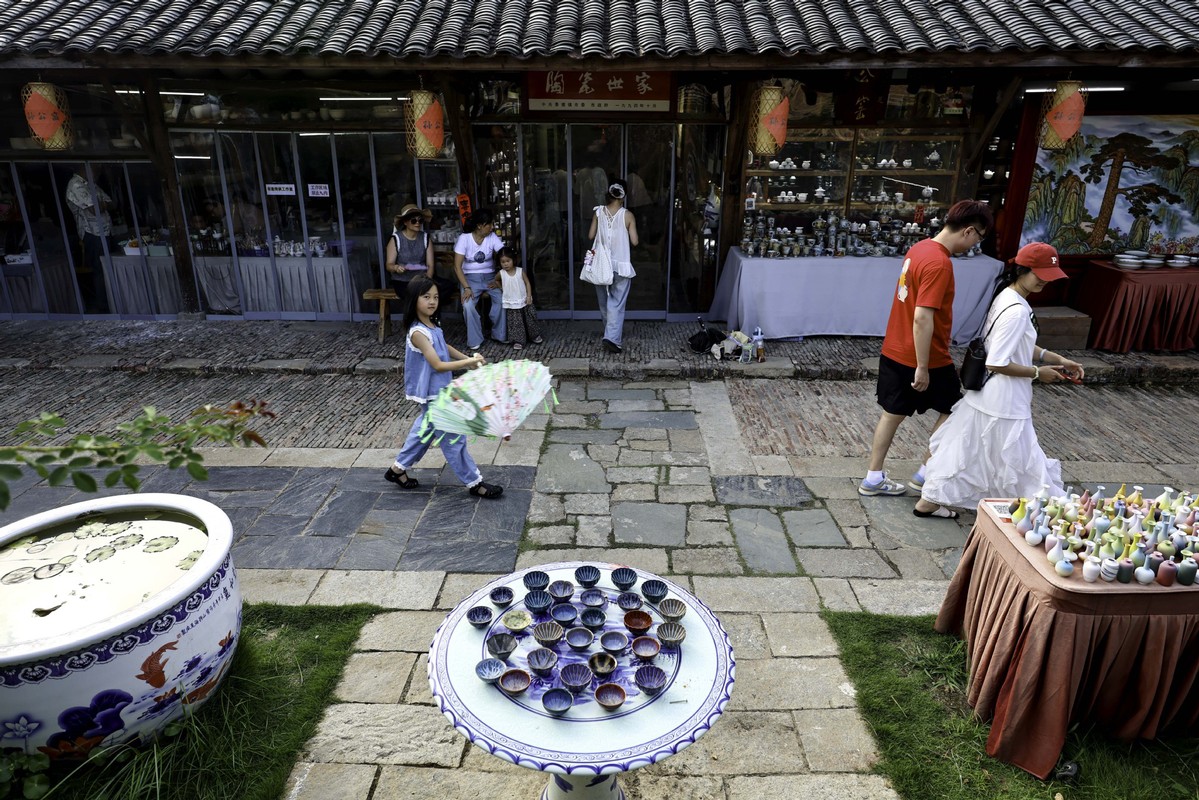

Stepping into Taoyangli feels like entering a thousand-year dream dominated by porcelain. Mottled kiln bricks, winding ancient lanes, and the rekindled glow of kiln fires welcome visitors to the heart of China's ceramic capital, Jingdezhen in Jiangxi province.
Spanning about 600,000 square meters, the area is an integral part of Jingdezhen's porcelain heritage. It safeguards precious remnants of the ceramic industry over centuries. Yet, as industrial ceramic production flourished, Taoyangli and the traditional craftsmanship it symbolized declined. Kilns were abandoned, historic buildings decayed, infrastructure lagged, and the district faded.
In recent years, local authorities have launched an integrated, systematic restoration. Guided by the principle of "protection first, repair the old as they were", Taoyangli, comprising the remnants of the Imperial Kiln Factory, the kilns serving the royal courts of the Ming (1368-1644) and Qing (1644-1911) dynasties, and old workshops used by ceramic artisans, is being built with a vibrancy combining tradition and modernity.
The restoration of the area began over a decade ago with the repair of the late Ming Dynasty Xujia Kiln. It's the largest wood-fired kiln still in existence, and was used to produce household porcelain. Reignited last June, it has produced thousands of porcelain pieces.
To date, more than half of its ancient and early modern residences have been restored, and tens of lanes revitalized.